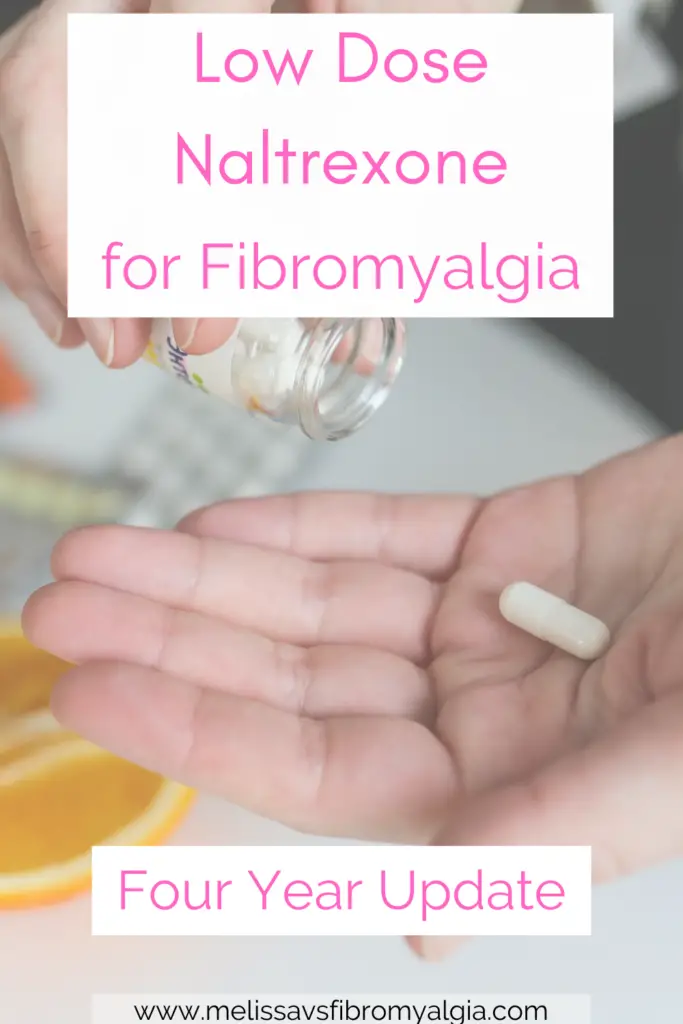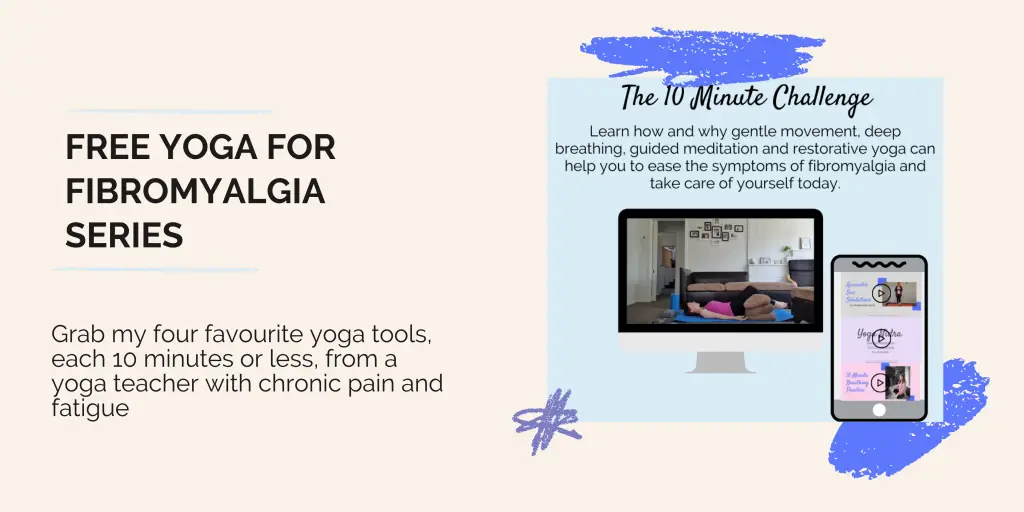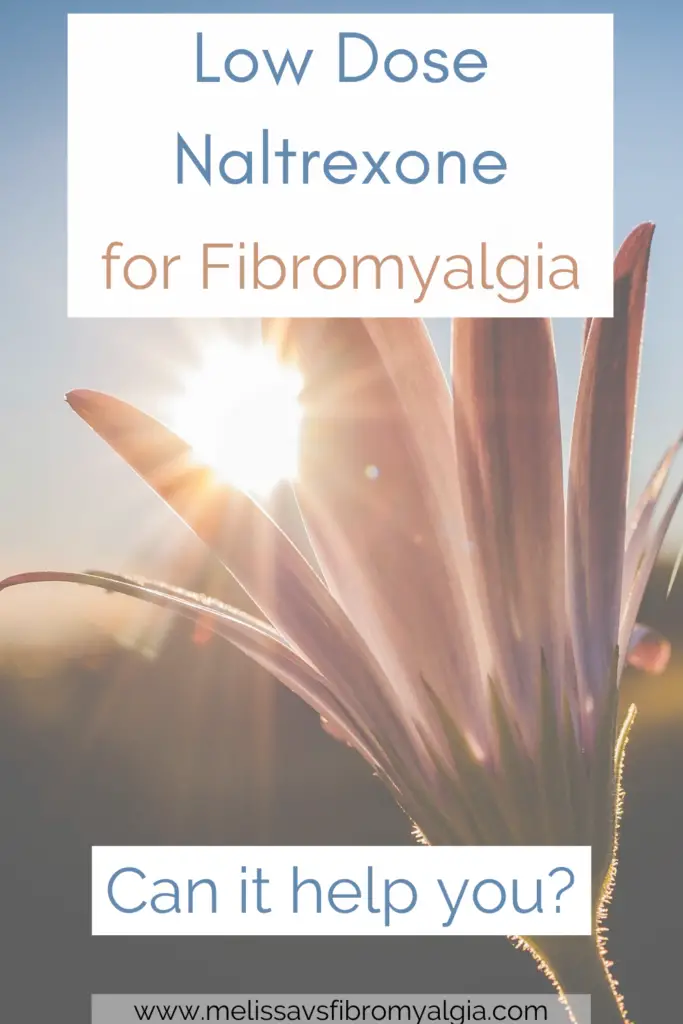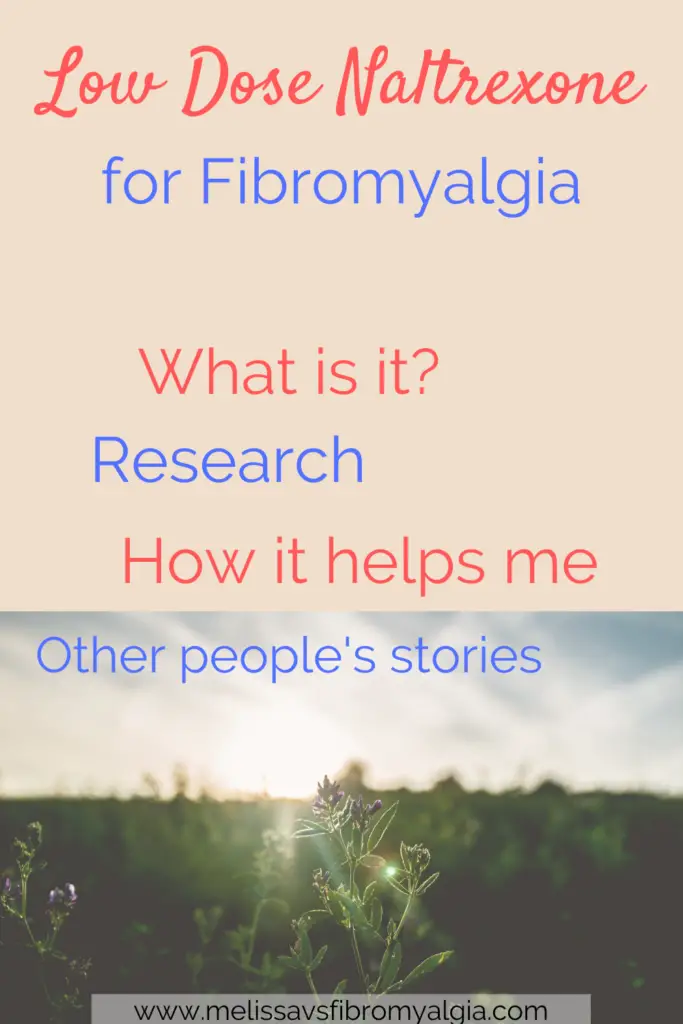Last Updated on August 28, 2023 by melissanreynolds
It’s been four years since low dose naltrexone or LDN for fibromyalgia began changing my life. So I thought it was time for an update.
As someone who’s mission is to share everything I learn so that your journey to better wellness would be shorter than mine, this is the type of post I want to be able to write all the time.

This is the type of medicine that one wants to be able to share about. I share why below. We will discuss what LDN is, how it works, research around it, how it has helped me (with sleep, pain, fatigue and more), a note about LDN and pregnancy and some other blogger’s LDN for fibromyalgia stories.
There is a bit to read here so I have created a mini eBook for you – you can grab that here. It has the chapter from my book on LDN, this blog post and a list of research to help you in your information gathering and decision making.

The video of this post
What is LDN
Naltrexone is an opioid antagonist that works differently in the body when taken at a lower dose. Usually prescribed for alcohol and opioid addictions at doses of 50mg or more, low dose Naltrexone is usually anything from .25mg – 6mg.
How does LDN for Fibromyalgia work
Naltrexone, at lower doses, temporarily blocks opioid receptors. Encouraging the body to produce more endorphins.
Doctor Ginevra Liptan puts it this way, in a now defunct article, Three Little Letters You Need to Know If You Have Fibromyalgia: “First, it increases the release of endorphins (the body’s natural opiates) and second, it lowers inflammation in the central nervous system.”
And if you have read this article about the central nervous system and fibromyalgia, you get why this is important.
Research has been showing promising results for several years now. Doctor Jared Younger started with a tiny study and found positive results, approximately 65% of patients included experienced clinically significant results. Dr Younger’s theory is around neuroinflammation, or inflammation in the brain.
This article from Health Rising has some good information: “The preliminary evidence continues to show that low-dose naltrexone has a specific and clinically beneficial impact on fibromyalgia pain. The medication is widely available, inexpensive, safe, and well-tolerated. (Younger et. al.)”
The research studies tend to focus on pain, but sleep and fatigue can be improved also.
Further information on how LDN works is well explained in this article, which includes many links to research.

Benefits and Side Effects of LDN
Besides the high efficacy rate, or impressive results, the other massive benefit of LDN is the low side effect rate.
Side effects are generally transient (short-lived) and limited. For example insomnia, headache or vivid dreams. Compare this to the usually prescribed fibromyalgia medicines which can cause worse symptoms than they are meant to help manage. Also, LDN causes no withdrawals, other than your body suffering because it was making a difference. You don’t need to reduce your dose or anything. When I went off just prior to having my third baby there were absolutely no withdrawals or negative effects.
It is also inexpensive, which is a boon for a community that struggles to maintain full time work and many medical expenses.
It can take some time to see benefit, though most of the trials start patients at 4.5mg immediately and last around eight weeks. In practice, myself and for people in the LDN groups I am in, we tend to need to start our doses lower and titrate up (increase our dose) slowly.
One significant issue is that many people with chronic pain are using opioid medication to help manage and this is contraindicated with LDN (being an opioid blocker). One approach may be to research ultra low dose naltrexone.

How I started taking LDN – dosing
Beginning with .5mg, I started by taking one capsule per evening. Adding .5mg every four days. At 2mg I began to feel an effect. Slowly, I titrated up to a dose of 4 milligrams.
I went into this experiment feeling that a 30% (this is a “statistically significant” result) improvement in any symptom would be life-changing. And I was right.
It took me about six months to get to 4 milligrams as previously my body couldn’t cope with that level, I experienced vivid dreams and flare ups of ulcers and cold sores each time I tried to titrate up too fast.
I believe my body took so long to respond because there was more than 10 years of healing to work through.
My Benefits Using LDN for Fibromyalgia
Sleep
Despite the research suggesting otherwise, the first time I was able to drop into deep levels of sleep was after beginning LDN. I went from sleeping in one hour blocks to two, three or even four hour blocks! This is combined with my sleep hygiene, restorative yoga and Yoga Nidra practices.
Try it – get your free Yoga Nidra download.
Pain
Since about nine months into treatment I have noticed a reduction in neck pain. Neck pain has been a 24/7 issue for over 10 years. In 2017, while starting LDN, I learnt that my neck issue is actually myofascial pain syndrome. After throwing the severe, recurring “muscle knots” (trigger points) into the fibro basket, I finally had an answer. The physiotherapist has been helping me to work on these trigger points through intramuscular needling (gently inserting a tiny needle into the trigger point and letting it relax a little) and neck mobilisations
This and the sleep (potentially reducing the fibromyalgia worsening the issue) has helped. My pain levels were 6-8/10 with severe headaches (with dizziness and nausea) daily back in 2010 before I started this journey. Just prior to LDN they were approximately 4-6/10 with occasional severe headaches.
In 2021 my average pain levels are 3/10 (with constant management which includes my pacing, Yoga Nidra practice, LDN, Recovery Factors supplement and everything I share here in this post) Ultimate Guide to Managing Fibromyalgia.
Emotional
If you haven’t lived with pain that interrupts sleep, interferes with daily life all day, every day for over a decade or been unable to sleep for more than an hour at a time for about the same length of time – it’ll be hard to convey the depth of impact on my emotional well-being.
Not fighting to sleep at 3am, not swapping pillows, getting my heat pack, applying pain cream and basically not sleeping due to unrelenting pain is huge for me.
Fatigue
Fatigue is the second of my two worst symptoms (neck pain being the first). Yes, that’s “is” not “was”. It’s improved but I still have a limited energy envelope. I can get through the day on a 30 minute meditation and a brief sit down with the heat pack. I still can’t physically stay up past 10pm and that’s a fair trade off to me. Pacing is still a key factor to managing well.
LDN for Fibromyalgia in Pregnancy
Research
I did some research around the use of LDN in pregnancy for my book and found a fertility doctor who has been using it for years and it’s had benefits for mama and baby.
Dr Phil Boyle presented this PDF document through the LDN Research Trust here
As an aside this article says, “Studies have indicated Naltrexone may have benefit at low doses in treating Premenstrual Syndrome (PMS), exercise or stress-associated absence of menstruation , Polycystic Ovarian Syndrome (PCOS), and endometriosis. It may also help with “tail end brown bleeding”, anxiety, poor sleep, and low mood.”
There isn’t a lot of literature around medicine use in pregnancy, but I took what I had and presented my choice to stay on it to my doctor. We decided for my context it was worth continuing. But that is individual and you need to take the research to your doctor if you are considering taking it during pregnancy – know your stuff in case your doctor doesn’t, they’ll hopefully appreciate the information.
I asked Doctor Liptan about this in an interview and she echoed similar information. See that interview here.
My Experiences
My third and (in 2020) fourth pregnancies were far better than my first two due to the better position in my health – even factoring in moderate pelvis issues causing loss of mobility and intense pain.
Personally, I’d far rather a proven (for me), side-effect free, medicine with a long history than any other option available for managing pain and sleep.
When it comes to delivery and being able to take any medicines that may be needed, including opioids, I come off at 37 weeks (my first baby came at 37 weeks and 4 days) and stay off until I go home with baby.
My only two “successful” breastfeeding experiences were while I was on LDN. This is likely because I was healthier overall and had more to give. As of October 2021 I was still exclusively breastfeeding (with tiny tastes of solids) six-month-old baby number four.

Other people’s experience
This is Katie from PainFULLY Living blog’s experience trying LDN
Here’s Donna from Fed Up with Fatigue blog’s experience with LDN (she has a heap more information too). This is her LDN information page.
This is Janice’s story, shared on the same blog above.
LDN Research Trust – conditions it can help page
LDN for Fibromyalgia Conclusion
I am so thankful for this medicine and for the improvement I have experienced on it. The improvement in sleep, pain and fatigue has been astounding and there are other things that have improved that I either can’t remember or can’t attribute to LDN directly. For example, my digestive health is improved. It really is a holistic treatment.
One thing I always want people to remember is that LDN for fibromyalgia is ONE key part of my whole of life wellness plan. It is not a miracle drug and doesn’t work for everyone. But it is so worth a try if you are able to.

Thank you for including my post (6month update). Next month, I’ll be at a year. It’s been a bit of an up and down and around journey for me. What’s difficult is that there’s not a set dose that’s great for everyone, and more isn’t necessarily better. I’ve been at 4.5 (2.5 before bed and 2.0 on waking due to insomnia and getting worn our early in the day). However, I’m going to try this last month at 4.0, (2 and 2) to see if that’s better.
You helped encourage me to give it a try, and I’m so glad you did. For me, it makes a HUGE difference in my clarity of thinking and energy level. I do get benefits with the pain, but not as much.
LDN definitely has improved my life with Fibromyalgia! I can tell almost immediately if I forget to take it even one night. Less pain, better sleep and more energy for sure. I take it in combination with Wellbutrin and cymbalta.
Hi, Melissa! Do you get your LDN from your general physician or from a specialist? I’m researching this medication for my own fibromyaglia.
Hi! My general practitioner prescribes this for me 🙂
I was on methadone for 12 mths to wean off Palexia that almost took my life (doesnt work with cymbalta! I spiralled into suicidal tendencies, it was shocking!), the pain spec didnt even chk this & put me on it, bad move!
After a year on methadone tabs, I became dependant wanting a higher dose, but no, I had to wean off it & that my friends was the hardest trial as the withdrawal was horrendous. Profuse sweating, non stop sneezing, acute sinusitis, insomnia (shocking!) mood swings, body zaps & intense pain, crying all day, I was in a terrible state for about 7 mths. I used Valium for two days but that made everything worse, so they put me on Prednisone, I was a mess. But, I got through it in the end & am happy to say Im off all opiates & S8 drugs. When I turned 50 I made a pact that Ill never go back on big pharma again! Yes Im on cymbalta for the past 7 yrs, I take panadol & Thyroxine 100mcg, thats it. I use supplements & herbs these days, have trigger pt therapy, massage, magnesium baths & tabs, Vit B compound, (I have kryptopyroles, where my blood doesnt uptake vit B or zinc!) Vit C, D, zinc, turmeric, herbal tincture for menopause, fish oil, & eat whole food plant based. Its been a long long road for me, diagnosed in 2000 with fm by a rheumy after 15 yrs prior of horrific pain from whiplash at 17yrs old, & sciatica from a fall on my coccyx in my mid 20’s, my journey had just begun & today at 53 with two major lumbar surgeries, I can share my testimony of what works for me, it may just help anyone suffering this debilitating disease. With maintenance, & a grateful heart I keep going, some days are hard, but Ive come to terms with it after decades of fighting it, I accepted it & try & live a day at a time counting my blessings Im still here alive & kicking watching my grandchildren grow. Thanks for rwading.
Regards
Cath
No reply to my comment from Melissa?? Wow
In low dose naltrexone there is E 171 Titanium dioxide, which is a carcinogen that is prohibited in food and dietary supplements. I hope someone in this forum will help by complaining about it. It’s simply not ok
Hi,
So I’m on Morphine and Oxycodone. Will I have to completely come off of these to try the Natrexelone? I have been wanting another option for my Fibromyalgia pain and that would be a blessing to finally be off of the Opioids?
There are protocols for ultra low dose naltrexone for coming off opioids. But it’s generally recommended to be off all opioids. Good luck